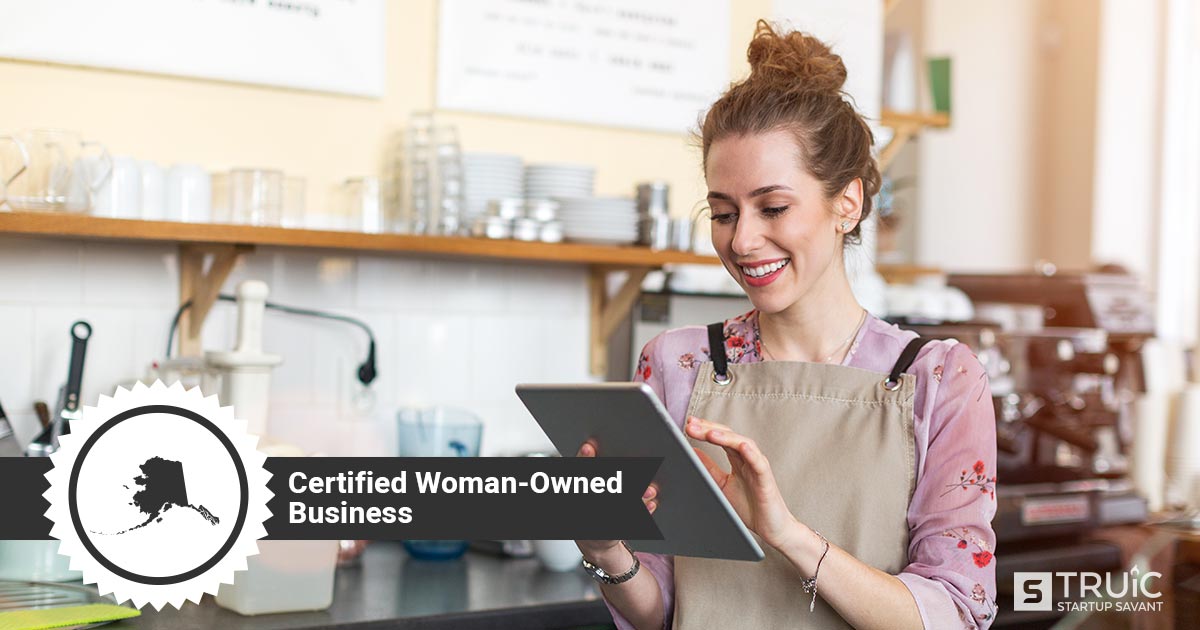If you’re a businesswoman in Alaska, you may have already noticed that it’s not always easy to get ahead. This is why a variety of organizations, including the government and major corporations, are becoming more and more conscientious of the businesses they work with on a general basis. These entities want to consider women-owned businesses as a way to diversify the ideas, methodology, and results.
If you want to take advantage of these types of opportunities though, you’ll almost certainly need to be certified as a woman-owned business in order to be considered. If your business is built and managed by women in Alaska, it’s time to take a deeper dive into how to become certified. We’ll look at what these certifications are, what they do, the additional businesswomen resources they provide, and how you can go about applying for one.
How To Use Our Guide:
We've narrowed down the Women-Owned Business certification process. There are many resources (e.g. WBE or SBA) that will help with your application.
Follow our guide to learn more about how to become a certified Woman-Owned Business in Alaska.
What Is a Certified Woman-Owned Business?
A certified woman-owned business is a company that meets certain criteria to access businesswomen resources through government contracts. This criteria is determined by the agency bestowing the women-owned business certification and can vary depending on whether you’re applying for a state, federal, or industry-specific certification.
When most people reference these certifications, they’re likely referencing those given by the Small Business Administration (SBA). This federal agency set the Golden Standard for certifications, and nearly every organization will use it as a basis if they offer their certifications. Dubbed Women-Owned Small Business (WOSB), this national certificate is often required before going further in a negotiation process.
There’s an even more specific certificate offered by the SBA called the Economically Disadvantaged Women-Owned Small Business (EDWOSB). This program places more stringent restrictions on the net wealth of your assets, but may earn businesses additional consideration if they choose to be a part of this program (provided you meet all criteria).
If you look into the history of these programs, it’s easy to see how your certification could increase your revenue. The federal government pledged to allocate at least 5% of all contracting dollars to businesswomen. This occurred in 2015 after women earned $17.7 billion from federal funds, and the numbers have only increased since then.
Women-Owned Business Third-Party Certifiers
The SBA isn’t the only entity that can issue a WOSB certificate in Alaska. There are three main third-party groups that can be of service that have all been approved by the SBA:
- National Women Business Owners Corporation (NWBOC): This organization aims to unite millions of women-owned businesses to advocate for advancement for all.
- Women’s Business Enterprise National Council (WBENC): WBENC promotes diversity whenever possible and helps businesswomen become certified to go further in their careers.
- U.S. Women’s Chamber of Commerce (USWCC): This organization gives women in business the resources and work they need to grow in confidence and leadership.
What Are the Qualifications to Become a Certified Woman-Owned Business?
Qualifications vary depending on the certification for which you apply. So, here are the general requirements for the women’s contracting program, according to the SBA website. Your Alaska business must adhere to the following guidelines to become a Women-Owned Small Business (WOSB):
- Qualify as a small business as per the SBA small business size standards, which generally use employee size and/or revenue as measures.
- Be at least 51% owned and controlled by women who are U.S. citizens.
- Be managed by women on a day-to-day basis. Women must also be the ones making long-term decisions for the company.
- The highest officer position in the company must be held by a woman on a full-time basis, during normal work hours.
No matter what types of certifications you apply for, you’re likely to be met with the same general criteria, though some will add on additional requirements that you need to meet. If you’re hoping to qualify for the EDWOSB in Alaska, you’ll need to prove the following of all women business owners:
- Net worth is $750,000 or less
- The fair market value of all assets is $6 million or less
- 3-year average adjusted gross income is $350,000 or less
If you apply for women-owned business certification through a third party, you may have a better chance of discussing the nuances behind your wealth and business. For example, the SBA may be able to make exceptions for the gross income average depending on your individual circumstances, or if the income made was brought about by special circumstances that are unlikely to occur again in the future.
Reviewing the Code of Federal Regulations can make it easier to understand both the rules and the exceptions to those rules. There’s also a preliminary assessment that can give you a better idea of if you’ll be approved based on your business. As a businesswoman, doing your research makes it easier to avoid unnecessary fees or delays. Businesses are allowed to apply for both the WOSB and the EDWOSB, and will even receive a discount if applying for both at the same time.
How Do You Become a Certified Woman-Owned Business in Alaska?
Becoming certified starts with deciding where your business is headed. When it comes to your chosen agency, some people find they have better luck going through a third-party entity because it’s more personal than the SBA. You may have a local branch in your area, but the local branch is still dependent on the federal agency, which can ultimately impact your experience. According to personal accounts, some women in business found it much easier (and faster) to apply through a third-party rather than going through the SBA.
There are also more indirect benefits of going through a different group. For example, a third-party may also put you in touch with different influential businesswomen in your area, a perk that can have untold reach for your small business. If you find the right business partner, it can be exactly what you need to become that much more powerful in your field. While a third-party certifier will likely be more invested in your company, they may also charge you more in fees.
If you do choose to go through the SBA, you’ll need all required paperwork to show who’s in charge and how your company conducts business. The SBA provides a handy checklist to streamline the process for you. The application process will remain roughly the same for other organizations, though again, you may have more direct assistance and communication during the application process. If you are certified through one of the SBA-approved third parties, you’ll still need to send that certificate to the SBA so they have it on file.
Please note that women applying prior to summer of 2020 through the SBA have the option to self-certify through their website; however, after June 30, businesswomen will no longer be able to self-certify. Instead, you will have to certify through an approved third-party agency. Alternatively, you can choose the SBA’s Women-Owned Small Business federal contracting program and apply for certification through their online portal. The SBA application involves two steps:
- Visit sam.gov (the System for Award Management)
- It’s free
- You will have to wait at least 72 hours before step 2
- Visit certify.sba.gov and complete the form
SBA’s online program is free to use, though you will still need to pay the required fees if you’re interested in receiving an actual certificate through a third-party, since the SBA does not provide the certificate itself. A certificate is not required for federal government contracts — you only need to be officially certified and listed on their women-owned business database.
If you’re still unsure about the specifics of the SBA’s Women-Owned Small Business Federal Contracting Program, you can call (800) 827-5722 or email answerdesk@SBA.gov. To speak to a representative, be prepared to wait approximately 5-10 minutes for the automated message to end and depending on their call volume, you may have a longer wait.
You can expect your certification to be processed within 15 - 90 days. If you’re hoping for a shorter approval time, it helps to dig into the practical requirements of each organization. For example, if you’re certifying through the WBENC, you’ll need to prepare a variety of financial documents before applying. To be fully approved, you’ll need to submit for an on-site visit from WBENC members, where they will visit your place of business to corroborate that the information in your submitted documents is correct.
Alaska Woman-Owned Business Certification Resources
Alaska does offer its own state certification program, though it’s only open to those in the transportation industry.
Alaska Unified Certification Program (AUCP)
The AUCP is run by the Alaska Department of Transportation & Public Facilities, though it’s mandated by the larger U.S. Department of Transportation. The goal of the AUCP is to register qualified women-owned businesses as a Disadvantaged Business Enterprise (DBE), which can lead to projects funded by federal agencies and run by a variety of agencies in the state of Alaska. This can include aviation, highway, and transit projects for businesswomen who offer related services.
What Are the Benefits of Becoming a Certified Woman-Owned Business in Alaska?
The most obvious benefit of becoming certified is the opportunity to make more money through larger federal government contracts. Getting ahead in Alaska starts with exploring the many businesswomen resources available to you, and this can be a powerful one to have at your side. Not only are you able to apply for more opportunities, but you’re also placed on a highly visible directory that can effectively market your women-owned business to organizations who need your services. You can expand your team, branch out your menu of products and services, and even grow your influence in the state.
Even if you aren’t granted countless lucrative federal government contracts immediately, there are still reasons to certify your business. Every certification group offers its members ongoing opportunities to get themselves more exposure. From networking events to educational seminars, you’ll be immersed in the ins and outs of the business world. As the state evolves and changes, you’ll be at the precipice so you can prepare for an ever-adapting economy.
Every certification has its own benefits though, so you’ll need to research each one based on your individual business. For example, a WBE certification may be accepted at a variety of corporations and municipal organizations in Alaska, but for federal contracts, you’ll need a WOSB certification.
State funding in Alaska for women-owned businesses generally comes in the form of loans through state organizations. There are some exceptions though if you’re a non-profit. The Mat-Su Health Foundation does provide some grant money to some businesses in Alaska, though this is open to all businesses as opposed to women-owned businesses. There are also national grants for women-owned businesses, such as the Amber Grant, which can help with the additional financing for new ventures. Additionally, you can explore other small business grants for women or contact the Small Business Development Center (SBDC) in Alaska for more women-owned business opportunities.
In 2018, Alaska was found to have the highest percentage of women-owned businesses in the entire nation according to the University of Alaska's Center for Economic Development. The beauty of this achievement has been attributed to the pioneer spirit of the state. Despite such harsh conditions, residents know and appreciate the value of hard work and of going the extra mile.
There are additional funding opportunities such as, loans, investors, and more for women entrepreneurs if a woman-owned business certification is not right for you.



